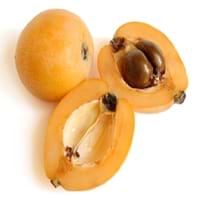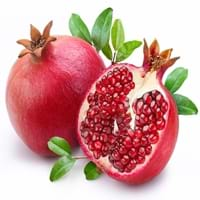Health Benefits
Cancer prevention, Heart care, Reduces nervous tension, Reduces blood circulation problems, Reduces stress, Regulation of heart rate, Strengthening of bones
Cancer prevention, Heart care, Helps in cartilage regeneration, Improves stomach health, Increase in haemoglobin, Increases metabolic rate, Prevents constipation
General Benefits
Anti-inflammatory properties, Controls blood pressure, Digestive aid, Eye care, Helps in weight loss, Improves eye vision, Maintains healthy cholesterol level, Strengthens bones
Boosts immune system, Controls blood pressure, Controls blood sugar levels, Digestive aid, Maintains healthy cholesterol level
Skin Benefits
Anti-aging benefits, Reduces wrinkles, Treatment of dark spots, Treatment of skin diseases
Anti-aging benefits, Skin rejuvenation, Treatment of acne
Hair Benefits
Protects hair
Prevents hair loss, Promotes longer and healthier hair, Treatment of dandruff
Allergy Symptoms
Diarrhea, Itching of mouth, Nasal congestion, Sneezing, Swelling of face, Watery eyes
Abdominal pains, Anaphylaxis, Itching
Side Effects
Allergic reaction
Allergic reaction, Cold, Breathing difficulty, Irritation, Swelling
Best Time to Eat
Along with meal, As a snack in the late afternoon, Don't consume at night and before bed, Morning time (before lunch)
Best if taken as a breakfast (or empty stomach), As a snack in the late afternoon, Eat the fresh ones, avoid mixing with any other foods, don't eat after meal., Morning time (before lunch)
Vitamin B5 (Pantothenic Acid)
Not Available
Vitamin C (Ascorbic Acid)
Not Available
Vitamin E (Tocopherole)
Not Available
Vitamin K (Phyllochinone)
Not Available
Lutein+Zeaxanthin
Not Available
Phytosterol
Not Available
Calories in Fresh Fruit with Peel
Not Available
Calories in Fresh Fruit without Peel
Not Available
Calories in Frozen Form
Not Available
Not Available
Calories in Dried Form
Not Available
Calories in Canned Form
Not Available
Calories in Juice
Not Available
Calories in Jam
Not Available
Calories in Pie
Not Available
Type
Tree fruit, Tropical
Tree fruit
Varieties
Ahdar, Ahmar, Asfar, Blush, Champagne, Early Red, Eulalia, Fire Ball, Golden Red, Golden Yellow, Oliver, Thales, Thames Pride, Victor and Wolfe
Balegal, Crab, Cloud, Francis, Freshman and Granada
Color
Orange, Yellow
Dark red, Light pink-red
Taste
Sweet, Tart
Juicy, Sweet
Soil Type
Clay, Loam, Sand, Well-drained
Clay, Sand
Climatic Conditions
Warm to hot climate
Cold, Dry, Hot
Facts about
- Loquats are used in plum wine manufacturing.
- Dried leaves of loquat are used to make herbal tea.
- The seeds of loquat are slightly toxic & the symptoms of intoxication are nausea, vomiting & shortness of breath.
- Pomegranate means apple with many seeds.
- It was called as the “apple of Grenada” in early English.
- In Hinduism, this fruit symbolizes prosperity and fertility.
- Pomegranate trees can live upto 200 years.
Other Countries
Brazil, Chile, China, Egypt, Israel, Italy, Morocco, Pakistan, Portugal, Spain, Turkey
Africa, India, Middle east, Pakistan
Top Importer
China
Europe
Botanical Name
Eriobotrya japonica
Punica granatum
Synonym
Crataegus bibas or Mespilus japonica or Photinia japonica
Punica malus
Subkingdom
Tracheobionta
Tracheobionta
Division
Magnoliophyta
Magnoliophyta
Class
Magnoliopsida
Magnoliopsida
Family
Rosaceae
Lythraceae
Species
E. japonica
P. granatum
Generic Group
Rose
Pomegranate
Difference Between Loquat and Pomegranate
We might think that Loquat and Pomegranate are similar with respect to nutritional value and health benefits. But the nutrient content of both fruits is different. Loquat and Pomegranate Facts such as their taste, shape, color, and size are also distinct. The difference between Loquat and Pomegranate is explained here.
The amount of calories in 100 gm of fresh Loquat and Pomegranate with peel is 47.00 kcal and Not Available and the amount of calories without peel is Not Available and 83.00 kcal respectively. Thus, Loquat and Pomegranate belong to and category.These fruits might or might not differ with respect to their scientific classification. The order of Loquat and Pomegranate is Rosales and Myrtales respectively. Loquat belongs to Rosaceae family and Pomegranate belongs to Lythraceae family. Loquat belongs to Eriobotrya genus of E. japonica species and Pomegranate belongs to Punica genus of P. granatum species. Beings plants, both fruits belong to Plantae Kingdom.









